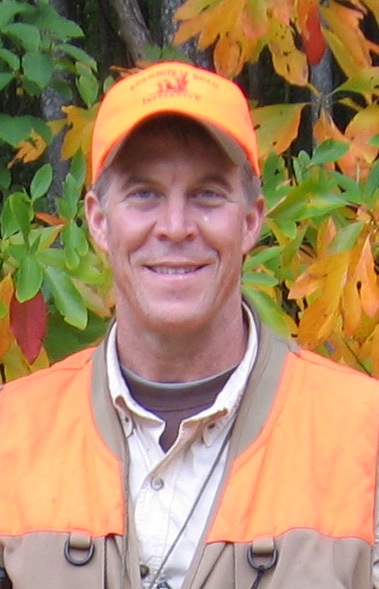More than a decade ago, the bobwhite folks reached consensus that we needed an effective voice in Washington, DC to represent quail habitat needs in federal conservation policy. Too many longstanding problems and missed big opportunities for quail had been rooted in uninformed decisions made in Washington.
During 2009, NBCI and our partners were pursuing two funding opportunities simultaneously: approval as a “Keystone Initiative” of the National Fish and Wildlife Foundation, and a Multistate Conservation Grant. Both avenues aimed to establish a DC policy position for the NBCI.
During 2009, NBCI and our partners were pursuing two funding opportunities simultaneously: approval as a “Keystone Initiative” of the National Fish and Wildlife Foundation, and a Multistate Conservation Grant. Both avenues aimed to establish a DC policy position for the NBCI.
- In the meantime, two different operational models for that position had been proposed.
The NBTC Agriculture Policy Subcommittee (led at the time by Bill White and Chuck Kowaleski) developed a thoughtful recommendation that the NBCI create a technical liaison with the USDA Farm Service Agency (FSA), housed within the very FSA division that administers the Conservation Reserve Program – the Conservation and Environmental Programs Division (CEPD). At the time, the FSA Deputy Administrator for Farm Programs (DAFP) had a vibrant relationship with the wildlife community and vigorously supported the liaison concept as a way of building relationships and helping FSA improve the CRP’s effectiveness for quail. - The other model for a full-time DC quail position – based largely on my personal DC experiences from 1991-1997 as a full-time agriculture conservation policy coordinator with the Wildlife Management Institute – was an all-purpose DC quail habitat representative, a professional quail expert interested in policy, who can tolerate DC long enough to become effective.
We opted to try the Ag Policy Subcommittee’s FSA Liaison model. Our 3-year MSCG proposal was funded, and in summer 2010 the NBCI was privileged to hire Bridget Collins, the one person in the U.S. at the time who was a (a) quail expert, (b) interested in policy, and (c) didn’t mind working in DC. Shortly after she started working inside CEPD, the politically appointed DAFP who had been so supportive left the agency. Two years later, Bridget was hired by the Association of Fish and Wildlife Agencies as their new Agriculture Conservation Coordinator. For the last year of the position, the NBCI was fortunate to find and hire Kyle Brazil, a quail expert with an interest in conservation policy who was willing to move to DC to give it a try. Kyle finished the term of the grant in December 2013 and left DC to go back to southeast Texas to work for the Wildlife Habitat Federation.
Bridget and Kyle did valuable service for the NBCI in a challenging position that very few of us quail folks could handle. They earned our respect and gratitude. Both made real contributions by providing technical input on key practices and proposals. For example, Kyle created and led a national coalition supporting increased USDA use of native vegetation, and shepherded the NBTC’s proposal for center pivot corner eligibility in CP33 farther than anyone or any group had ever been able to. Some 250,000 acres (the unfilled CP33 allocation) of quail habitat opportunity is at stake in the bobwhite states that have center pivot irrigation. Every previous proposal over the last 20 years for pivot corner eligibility in a continuous CRP practice had been immediately and firmly rebuffed by FSA. But right up until he left, Kyle had been able to negotiate the concept to the verge of internal acceptance by FSA. The matter remains on the verge, unfinished, but without our NBCI person in DC tending to it.
Fortunately, a majority of the bobwhite states are stepping up right now to provide increased, stable funding for the NBCI for the next 3 years. This vote of confidence from the states makes it more likely that we will be able to refill the DC position sooner than later.
Meanwhile, this pause allows reflection. The concept of a key federal agency liaison offers intriguing possibilities, but also comes with myriad limitations and sensitivities. We knew from the beginning that this experiment could turn out to be a brilliant stroke of genius or a colossal failure. It ended up somewhere in between, for a variety of reasons, but the bottom line is it did not meet our needs. On the bright side, the bobwhite community now has a much better understanding of why things are the way they are with CRP, and has made some valuable connections within USDA.
The NBTC Ag Policy Subcommittee and Steering Committee currently are mulling over the lessons learned from the last three years, and deliberating on how better to set up and manage the position once we are able to refill it.
Meanwhile, this pause allows reflection. The concept of a key federal agency liaison offers intriguing possibilities, but also comes with myriad limitations and sensitivities. We knew from the beginning that this experiment could turn out to be a brilliant stroke of genius or a colossal failure. It ended up somewhere in between, for a variety of reasons, but the bottom line is it did not meet our needs. On the bright side, the bobwhite community now has a much better understanding of why things are the way they are with CRP, and has made some valuable connections within USDA.
The NBTC Ag Policy Subcommittee and Steering Committee currently are mulling over the lessons learned from the last three years, and deliberating on how better to set up and manage the position once we are able to refill it.
Stay tuned for updates.
February 5, 2014


